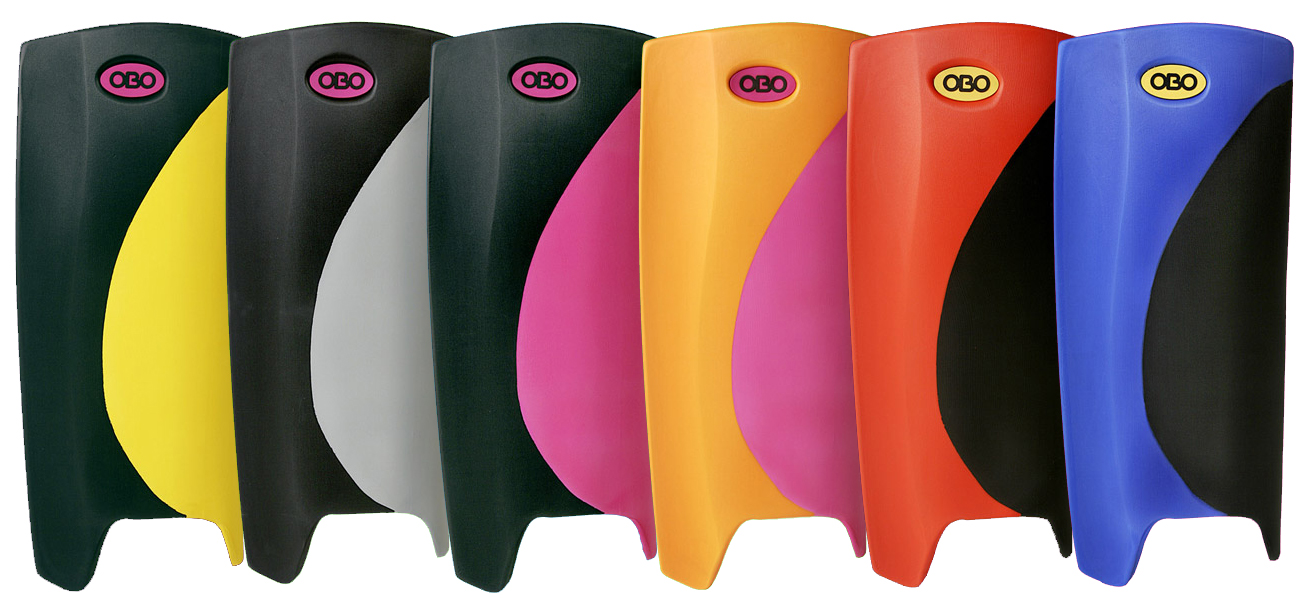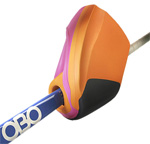In the quest to become better players, goalkeepers train thousands of hours, burn millions of calories and spend hundreds of dollars on equipment. Yet when it comes to the difference between becoming a good keeper and a great keeper, the answer may lie between their ears. The mental game can be a critical part to success.
It’s always interesting to talk to keepers about the mental side of the game. There are many great keepers who succeed on their athleticism and instincts. They can simply go out and play well. For others, training and playing are only part of the equation for success. Visualization, mental imagery, relaxation techniques, breathing exercises, focus and confidence are every bit as important as weight training and skill work.
How effective sport psychology may be in your game can be influenced by how open you are to change. For many, the mere mention of sport psychology and a mental game implies weakness of the worst kind, the mind. Somehow, it’s easier to say you’re going to the weight room to get physically stronger than it is to say “I’m off to a quiet place to visualize.” In reality, one is no different than the other.
I’ll confess to being a convert to the value of the mental game. Early on, my experiences were jaded by my prejudices and perceptions. When I encountered problems with my game, my answer was more practice but there’s only so much you can physically practice. Like it or not, the nature of the goalkeeping position is goals will be scored, mistakes will be made and games will be lost because of them. There are internal and external pressures to succeed in hostile and distracting settings. How do you practice dealing with problems like these? In time I figured out all the physical training in the world didn’t help if I couldn’t let go of the goal that was just scored. I needed to fix how I thought and how I reacted and I needed help.
As a player and a coach I’ve had the opportunity to see a number of sport psychologists at work at the team and individual level with players ranging from high school to international standard. Their work can be invaluable as these specialists draw from their education and experience to bring out the best in athletes. Unfortunately, not everyone has access to a sport psychologist. While complex problems are best left to experts, there are common problems that keepers can improve on their own by using sport psychology techniques.
Time, energy and resources often limit how a player can work on a specific skill or situation. Mental imagery, or visualization, is a sport psychology tool used to simulate physical training or game situations and is proven to be effective in improving performance. Essentially, mental imagery is the practice and repetition of a skill in the mind. Through internal repetition the mind trains the body.
In visualizing, detail is important. You get best results by being clear and specific about the skills or situations you’re training. When it comes to skills, video can help in establishing a clear picture of mechanics. For a skill like kicking a cross ball with the left foot, visual details could include: the left wing coming down the side line; the keeper establishing position off his line; the player striking the cross; the keeper pushing off his right foot getting solidly behind the kick and clearing safely and powerfully to a teammate. Replay each part of the skill in your mind, see your body explosively moving to the ball and executing the skill, replaying that perfect clear.
When visualizing a new skill, start by seeing the skill in slow motion so that you can begin to establish a link from the mind to each part of the body that’s involved with the skill. While you’re not physically moving when visualizing skills, try to “see” and “feel” the movements you’re trying to master. As you become more comfortable with visualizing a skill and had the opportunity to physically train the skill on the practice field, you can speed up your mental video to game speed.
Mental imagery can also be used to visualize game scenes, especially pressure situations: the big save with time running out and the match on the line, getting on with the game after allowing a bad goal and tuning out trash talking opponents and hostile crowds. It’s difficult to physically recreate the feeling of these pressures on the training ground, but mentally you can train for these types of situations. Whatever you can imagine, you can train and prepare for.
An important part of any mental training is creating an environment for work. For the mind to work best, the body needs to be comfortable and relaxed. Loose clothes, a clear mind and a cool place where you can lie or sit comfortably are a good start in creating that setting. Avoid areas where there are distractions like noise and activity. Mental training is like physical training in that you improve with repetition. Mental training does require energy and sessions are best-kept under 30 minutes. Many athletes use visualization around the time of their events, the morning of afternoon games or the afternoon of evening matches. Mental imagery can be practiced before sleeping, but training should be built around times when you’re not tired.
It’s one thing to be psyched up for a game, it’s another to be psyched out. Picture a game, the keeper hasn’t seen the ball in his circle for 20 minutes. The ball enters his 25 and he’s screaming to organize his defense. The ball is played in to the circle, the keeper is ready for the bullet shot and the forward hits a medium paced ball just to his left. The keeper explodes and the ball goes under his foot. Was the keeper ready? If anything, the keeper was too ready. Extreme anticipation and over arousal are terms used to describe what happens when athletes are too keyed up.
Athletes perform best in an aroused state. The aroused athlete is alert, aware and ready for action. Arousal can be confused with anxiety, though. While the aroused athlete is alert and composed, the anxious, or over aroused athlete is alert to the point of panic. It’s natural to feel a rush of adrenaline in pressure moments of a match, but it’s critical to manage that rush of energy. Often it’s wasted on nervous movement, excited communication or hyperventilation. Many sports psychologists point to breathing as one way of managing arousal.
Simple breathing exercises focus on controlling the breath. It starts with practice before the match. Typically, the breath is used to center the athlete. The practice is drawn from yoga and is built on using the inhalation to draw oxygen, or energy, into the body. The goal is to build to full, deep inhalations and complete exhalations. By focusing on the breath an athlete is drawing energy into the body through the intake of oxygen. Obviously breathing isn’t a keeper’s sole focus while the ball is in his circle, but he can use breathing to relax and re-energize when play doesn’t involve him in a game and practicing breathing does train the body to stay relaxed in pressure situations. Breathing is often used to establish a setting for visualization away from the field.
Focus is concentrating on what’s important in the context of the game. The game can be filled with distractions. Focus is filtering those distractions out and taking in the important information that’s critical to reading play. It’s recognizing scoring opportunities, reading passing lanes, positioning defenders and anticipating situations. Athletes talk about being in a “zone” where they know where the ball is going before it’s shot. That “zone” is the direct product of focus.
An important part of managing focus is recognizing when you have the opportunity to relax. A keeper can mentally and physically exhaust himself by being too focused. 100% concentration isn’t required when the ball is in the other team’s circle. Take those moments to breathe, stretch, and relax.
One of the most frequent mental problems I hear from keepers concerns confidence. How do you find confidence when you allow a soft goal or get in to a run of bad play? Confidence can be precarious, especially when the stakes are high. Many keepers are their own worst enemies. Every keeper has let in a bad goal and sometimes a team loses because of it but it’s important not to dwell on goals that are already on the board and create self-fulfilling prophecies of disaster. Don’t use a past event as a projection of what’s going to happen. A keeper’s ability to play well doesn’t just disappear (barring injury). The good keeper treats history for what it is. Yes, I want to think about what I might have done differently on a goal immediately after it’s scored, but I need to be ready for what’s coming next by the time my team takes the push back. Confidence should allow a keeper to be secure in the knowledge that whatever comes, he’s probably seen it and saved it.
When assessing your game, what are the things that give you confidence? For me, a big one is the knowledge that I have played well before. Success isn’t a fluke or an accident. It is the product of preparation and opportunity. When I get in a good groove playing, I try to stay consistent in my training, my sleep patterns, my diet and my pre-game warm up. By the same token, if I’m not playing well I try to look at those factors. Success is a habit and I find that I play my best when I’m consistent. Having said that, it’s important to not get married to routine. There will be times that I have to deviate from my routine, but that’s where the knowledge that I’ve been succesful before comes in.
Competitive sport is challenging, physically and mentally. Two teams are playing to win and sometimes a team is going to come up short. The challenge is how will a keeper respond, what changes will you make? Sometimes the answer lies in a skill; sometimes it lies within, literally. As I mentioned, I’m not a sport psychologist. The techniques I’ve talked about are ones that I have experience with. Newspapers and books are filled with stories of athletes from a variety of sports who’ve benefited from working on their mental game with trained professionals. Read about them. You can learn a lot from their experiences, whether it’s in a magazine or on the Internet. If you genuinely want to improve your game, leave no stone unturned. It isn’t crazy to work on your mental game; it’s crazy not to.
Goalkeepers are amazing people!!!
Good luck,
Jon
e-mail Jon
Please note that OBO together with Jon O’Haire hold copyright over any material appearing on tips pages. We welcome the printing and distribution of these tips, provided that they are not sold, or used for financial gain. This paragraph must appear on all printed or distributed copies. The photographs above must not be used in any form without express permission from Jon O’Haire.

